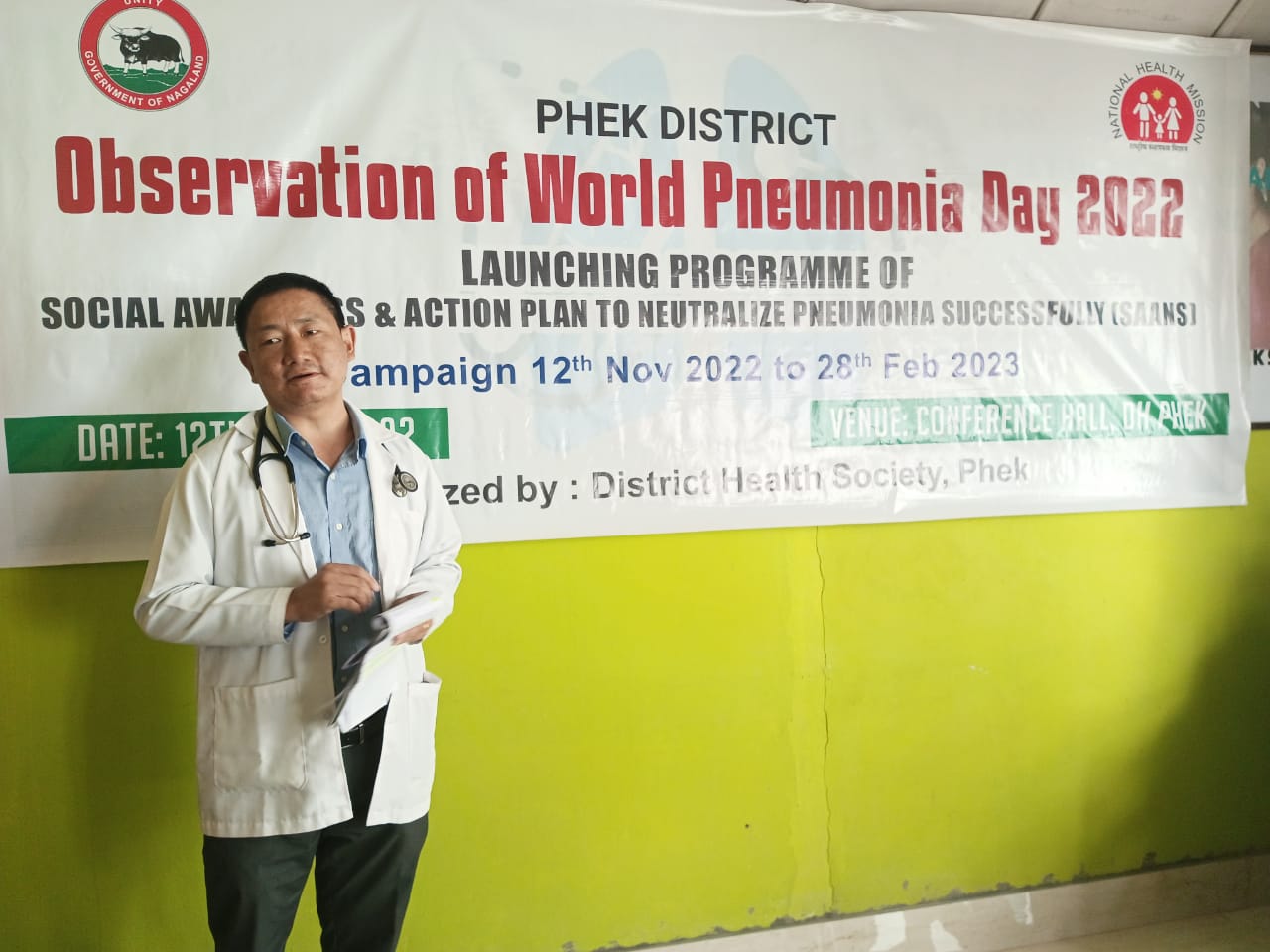- Abhimanyu Saxena, Head, Health Systems Strengthening, UNDP India
Breathing New Life: Impact of Oxygen generating plants in remote regions
April 7, 2024

Nestled in the scenic slopes of the Naga hills, the district hospital in Phek, Nagaland, mirrors the energy and dedication that millions of healthcare professionals exhibit in their life-saving efforts. Dr. Ngopelo, a dedicated physician at the hospital, spends his days managing a continuous flow of patients and overseeing the facility's operations.
“We are six hours away from Dimapur (Nagaland’s commercial hub which has an airport) and Kohima (the capital of the state of Nagaland). That's the same time it took to secure oxygen supplies when our stocks got depleted during the pandemic,” says Dr. Ngopelo.
In remote areas like Phek, accessing critical medical supplies is a perennial challenge, a situation that became critical during the COVID-19 pandemic. "The delays in receiving oxygen cylinders during the pandemic severely impacted our ability to treat patients experiencing respiratory distress," Dr. Ngopelo recounts as we navigate the hospital's busy corridors.
Previously, it took nearly a full day to replenish oxygen supplies, a delay that strained resources and staff availability, particularly in smaller facilities. Recognizing the urgency, India’s Ministry of Health and Family Welfare, in collaboration with the United Nations Development Programme (UNDP), established an Oxygen Pressure Swing Absorption (PSA) plant in Phek in 2022. This initiative was part of a broader effort that saw 15 such plants installed across the northeastern states of India, bolstering over 5,000 oxygen beds in regions like Nagaland, Meghalaya, Tripura, Arunachal Pradesh, and Chhattisgarh.
Oxygen PSA plants are pivotal, enhancing the emergency preparedness of healthcare facilities at all levels.
A PSA plant ensures uninterrupted supply of oxygen unlike conventional oxygen cylinders. This mitigates risks of dependency on external resources for oxygen supply, reduces lead time for availability of oxygen, bypasses complex operational process, including identifying potential vendors, transportation, and find a mechanism to load and unload bulky cylinders in time.
The pandemic underscored the efficiency of such technology, allowing healthcare workers to concentrate more on patient care and less on supply chain logistics. Oxygen is a vital medical resource needed for a wide array of treatments, from pediatric and surgical care to managing pneumonia, maternal health issues, and chronic diseases. It is indispensable for patient care, ensuring comprehensive support across various medical needs.
Despite the pandemic's end, the relevance of Oxygen PSA plants remains undiminished, given their role in emergency response and ensuring equitable access to oxygen.
According to the World Health Organization (WHO), pneumonia alone claimed the lives of over 808,000 children under the age of 5 in 2017 globally, constituting 15 percent of all deaths within this age group. It is estimated that 20–40% of these fatalities could have been averted with access to oxygen therapy.
For effective and sustainable use of oxygen generation facilities, focusing on "Save Oxygen," "Safe Oxygen," and "Cylinder filling" is essential.
"Save Oxygen" is critical during the transition of oxygen from PSA plants to manifolds and oxygen beds, as there are potential risks of oxygen loss and leakage. It is imperative that healthcare workers understand the significance of oxygen and adhere to standard operating procedures (SOPs) to ensure zero loss of oxygen until it reaches the patient.
Ensuring "Safe Oxygen" is equally crucial. By promoting safe handling practices of oxygen, we not only safeguard healthcare workers but also the entire healthcare ecosystem, minimizing accidents caused by oxygen leakage and mishandling. This is essential for maintaining uninterrupted healthcare services and ensuring the safety of healthcare workers.
Furthermore, mechanisms such as "Cylinder filling" can significantly enhance primary and secondary healthcare services. By facilitating the provision of filled cylinders from oxygen PSA plants and ensuring timely distribution of oxygen to hard-to-reach areas, we can substantially improve healthcare delivery in underserved regions.
Now, with a stable oxygen supply, we can provide uninterrupted care. It's about saving lives and improving health outcome,” says a relieved Dr.Ngopelo.
As we mark World Health Day, it's crucial to continue investing in technologies like Oxygen PSA plants. They not only provide critical support to healthcare facilities but also ensure consistent, quality medical care is accessible to all, particularly in underserved areas.

 Locations
Locations
